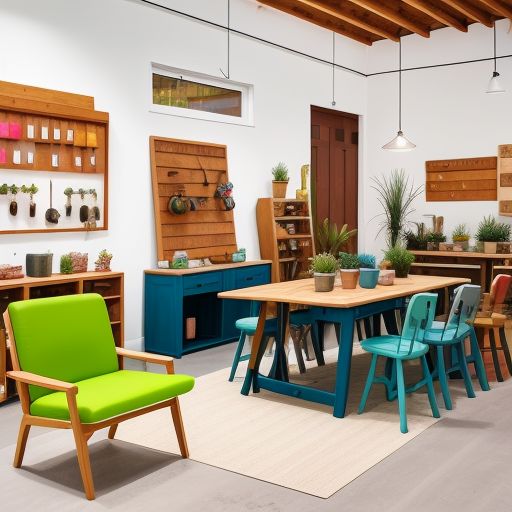
The demand for sustainable and eco-conscious products is on the rise, and starting an upcycled furniture business model can be a game-changing venture. By turning discarded or unwanted furniture into stunning, functional pieces, you not only save items from landfills but also cater to a growing market of environmentally conscious consumers.
The shift toward sustainability has made upcycled furniture more appealing than ever. This business concept aligns with consumer values while offering unique and creative designs.
Building a successful upcycled furniture business model requires a clear strategy. Here are the essential components:
Find reliable sources for discarded furniture. This can include thrift stores, flea markets, estate sales, or even online platforms like Facebook Marketplace.
The success of your upcycled furniture business model depends on your creativity. Transform outdated pieces into modern, stylish furniture that appeals to your target audience.
Understand your market and the preferences of eco-conscious buyers. Are they looking for rustic, minimalist, or industrial styles? Tailor your designs accordingly.
Set competitive prices that reflect the value of your craftsmanship and sustainability efforts.
Create a compelling brand story that highlights the sustainable and artistic aspects of your business.
Starting an upcycled furniture business model offers numerous environmental and social benefits:
While rewarding, running an upcycled furniture business model comes with challenges. Here’s how to overcome them:
Finding high-quality discarded furniture can be unpredictable.
Solution: Build relationships with thrift stores, donation centers, and recycling facilities.
Upcycling requires significant time for cleaning, repairing, and redesigning furniture.
Solution: Invest in efficient tools and streamline your workflow.
Some customers may not understand the value of upcycled furniture.
Solution: Highlight the craftsmanship, uniqueness, and environmental impact of each piece in your marketing.
Start Small
To start, create a few collectives to see how the market responds and garner feedback. This reduces risk and allows you to continue honing your processes.
Set Up an Online Store
Online marketplaces such as Etsy, Shopify, or a bespoke website are excellent for reaching a broader audience.
Build a Social Media Presence
Share the upcycling process, end items, as well as sustainability tips to attract potential customers.
Partner With Local Businesses
Collaborate with interior designers or sustainable home decor stores to network.
Track Metrics
Regularly review sales, customer feedback and inventory turnover to make your business better.
Q: What is an upcycled furniture business model?
A: It involves transforming old or discarded furniture into attractive, functional pieces to sell to eco-conscious consumers.
Q: How can I source furniture for upcycling?
A: You can find furniture from thrift stores, estate sales, recycling centers, or online marketplaces.
Q: Is upcycled furniture profitable?
A: Yes! With low material costs and high-value craftsmanship, upcycled furniture businesses can achieve healthy profit margins.
Q: What tools do I need to start?
A: Basic tools include sanding machines, paint supplies, woodworking tools, and upholstery materials.
Q: How do I market upcycled furniture?
A: Use visual platforms like Instagram and Pinterest, create a compelling brand story, and collaborate with eco-friendly influencers.
An upcycled furniture business model is more than just a creative venture; it’s a sustainable solution to a growing problem. By combining artistry, sustainability, and entrepreneurship, you can build a profitable business that positively impacts the environment.